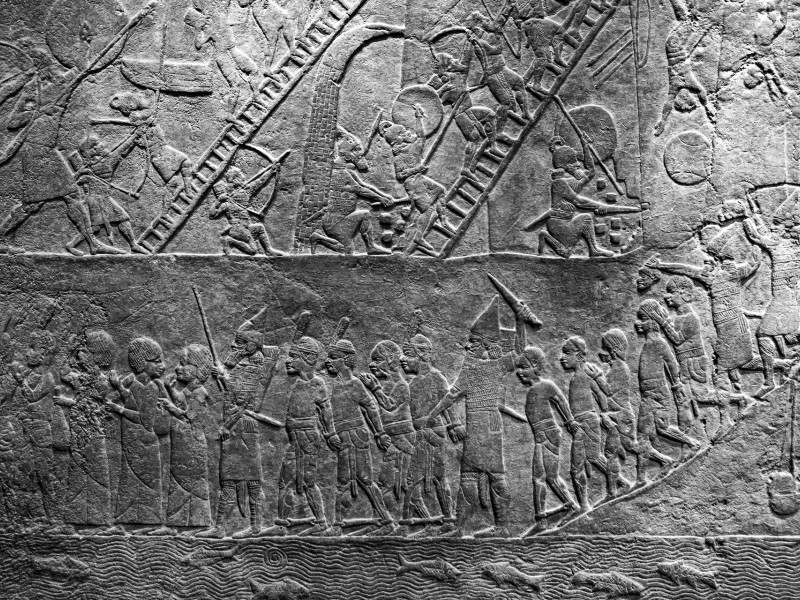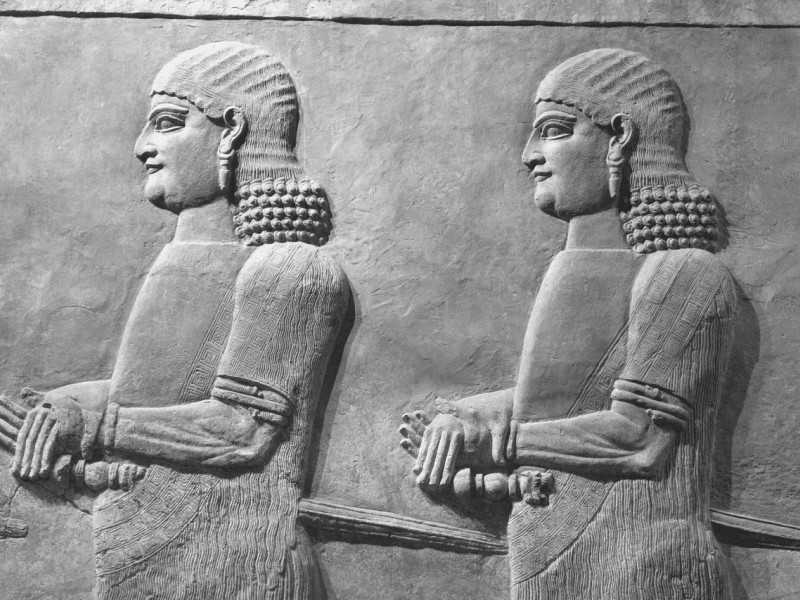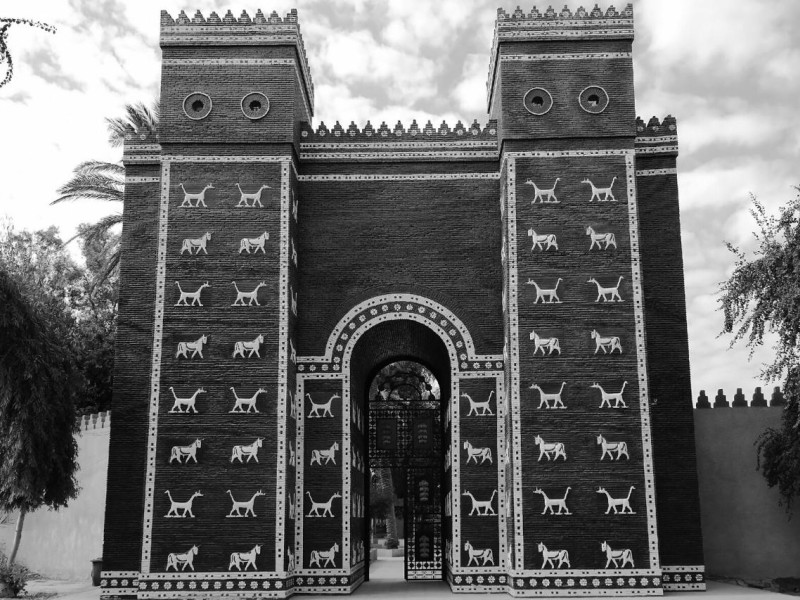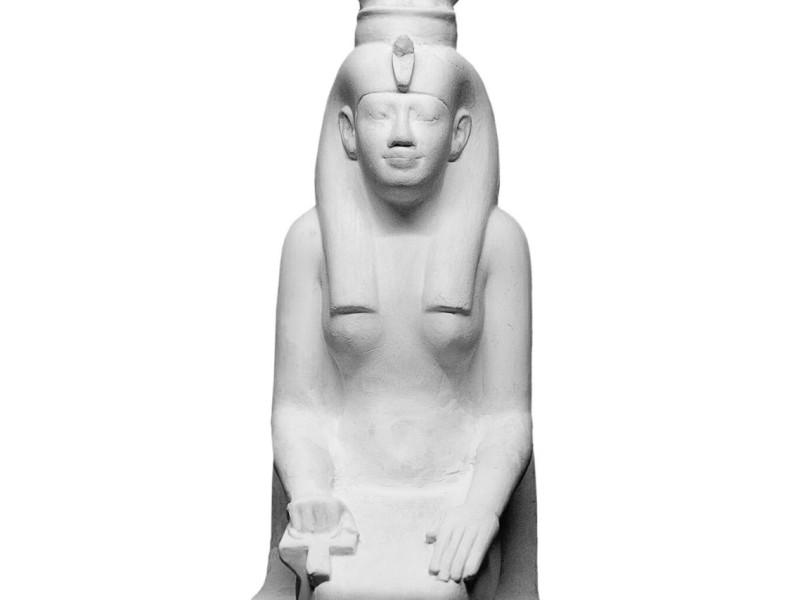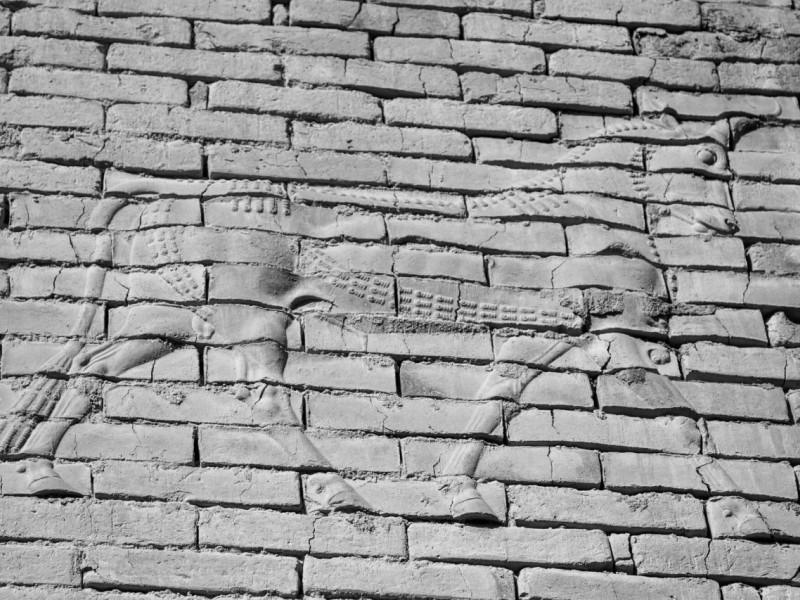Lilith
Legend of the Demon Queen
Who was the first woman? Eve or Lilith?
The Christians know only from their version of the Old Testament Bible that Eve was the first woman created from Adam’s rib. However, there is a Jewish legend found in rabbinic literature that the first woman was actually Lilith, who out of her pride, stubbornness and rebellious nature, abandoned Adam, and she was transformed into a demon.
The only reference to a female demon in the Bible’s Old Testament, but not explicitly to Lilith, is found in a passage in the book of Isaiah, in regards to punishing the people of Edom.
And the wild-cats shall meet with the jackals, and the satyr shall cry to his fellow; yea, the night-monster shall repose there, and shall find her a place of rest.
Isaiah 34:14 (KJV)
With this translation from the King James’ Version (KJV), most people believed that this night-monster was a female demon. The Jewish Publication Society (JPS) is more explicit in mentioning Lilith.
Wildcats shall meet the hyenas,
Goat-demons shall greet each other;
There too the lilith shall repose
And find herself a resting place.
Isaiah 34:14 (JPS)
There are no other mentions of Lilith in the Old Testament. Nor are there mentions of Lilith in any of the apocryphal and pseudepigraphal writings.
Many scholars now believe that Genesis has two different versions of the Creation. The style of writing in Genesis 1 is different from that of Genesis 2-3. Genesis 2-3 is written in a more storytelling style, being more dramatic than the 1st chapter. It would seem that Eve was created from Adam’s rib, after the 7th day of Creation in Genesis 2:20-24. Genesis 1:26-28, on the other hand, had both man and woman on the same day – the 6th day. It made no mention of Eden, the creation of man out of earth, and woman out of man’s rib. The fact is that they were never named in Genesis 1.
So could this unnamed woman from Genesis 1 actually be the first wife of Adam?
Of course this is only an impression or interpretation of the text. It is not substantial evidence of the existence of Lilith. Just because the woman is unnamed in Genesis 1, doesn’t mean she is Lilith. But the fact that the woman is somewhat of a mystery, prompted Jewish scholars during the Second Temple Period to speculate on the identity of this mystery woman, enough to produce a narrative of just that – Lilith being the first woman.
The rabbinic text that I mentioned comes from Louis Ginzberg's "Legends of the Jews," also known as the Haggada, and it was used to explain or interpret the narratives of the Bible. The Haggada is comprised of Jewish legends from the Creation to Esther. So the Haggada was actually extracted from the Jewish Talmud and some parts of the Midrash, but without dealing with Jewish law. The writing of the Haggada began in the 5th century BC, and continued well into the 4th century AD.
The accounts of the Creation and Adam are actually longer than what is found in the Torah’s or the Bible’s Genesis.
Below is a summary about Lilith in the Haggada (Chapter II).
After the Creation of the world and all of the animals, God created Adam out of the dust from the Garden of Eden, he placed Adam's soul in this physical human body. Adam’s soul was actually created on the 1st day of Creation, when the face of God reflected from the water. Adam had a perfect body – beautiful, strong, and in the image of God.
I won’t go into more details about the Fall of Satan, except to say that Satan and his followers refused to bow to the First Man, and were flung out of heaven.
God saw that Adam was just one human, so he would need a partner to keep him company, but the relationship didn’t last long.
Like Adam, Lilith was created out of the soil. Since she was made out of the same substance as Adam, she regarded herself as Adam’s equal, not inferior in any way to Adam. Lilith demanded equality, because she argued that she was created from the dust of the ground, just like Adam. Adam refusal to accept her as his equal, led to her rejecting and abandoning him.
According to a medieval text known as The Alphabet of Ben Sira (10th century), Lilith refused to lie below when they were having sex. Lilith refused to be a passive and submissive partner. However, this refusal is not found in the Haggada itself.
Speaking God’s name, she grew wings and flew away to the Red Sea. In the desert, she spawned a hundred demons. Adam complained to God that his wife had abandoned him, and now he was alone. God commanded His angels to bring Lilith back to Adam. The angels tried to force her to return to Adam, or she would lose her children. Lilith adamantly refused to live with Adam.
She took her revenge by killing human babies; boys when they are only a day old, while girls up to 20 days old. The only way to ward her off, was to adorn each baby with an amulet with the names of three angels; the same three angels who had confronted Lilith.
So, God created another woman for Adam – Eve. Like in Genesis, God created her from Adam’s rib.
Lilith reappeared in Chapter III of the Haggada, where it listed the descendants of Adam and Lilith.
After the murder of his son, Abel, by his elder son, Cain, Adam refused to sleep with Eve. Adam deserted Eve, rather than father another child that would die. During the night, Lilith visited him and mated with him while he slept, and she bore him countless demons that would beset the world.
It wasn’t until he was 130 years of age, when Adam returned to Eve, and she bore to him another son – Seth. Genesis does mention that Adam and Eve had other children, but their number and their names are not given. According to the apocryphal Book of Jubilees, Adam had nine other sons after the fratricide, including Seth. Unlike Genesis, Jubilees also mentioned a couple of daughters of Adam – Âwân (eldest) and Azûrâ; there were most likely a number of other daughters, but we are not certain of their number nor their names. Cain took Âwân as his wife, while Seth married Azûrâ.
It was said that after the translation of Enoch to heaven, God’s favourite patriarch became an archangel named Metatron; it was left to Methuselah, his son, to get rid of all of the demons that were descendants of demons that Adam had unknowingly begotten through Lilith.
Methuselah used a sword with God’s name etched on the blade. Methuselah slew 94 demons, before Agrimus, the first-born demon of Lilith, surrendered to the great patriarch. Methuselah placed all of the demon-kings in iron fetters, while the lesser demons or imps fled and hid in the deepest ocean.
As you can see, the Talmudic Haggada contains many details that were not included in Genesis of the Hebrew Torah and in the Christian Bible. There are also other references to Lilith.
According to the Haggada (vol. 2, chapter 3) regarding Job, it was Lilith who killed his oxen and his asses when Satan went to test Job’s piety and loyalty to God. The text referred to Lilith to as the Queen of Sheba.
In volume 4, chapter 2 (regarding Joshua), Lilith was mentioned with another she-devil – Mahlah. Who Mahlah was, I have not yet been able to determine, but I did find that she could go by her full name – Agrat bat Mahlah.
In the Haggada, volume 1, it said that Naamah, daughter of Lamech, sister of Tubal-Cain and descendant of Cain, was one of the women who had copulated with Shamdon, one of the Fallen Watchers (see Enoch & the Watchers, where you will find more detail about Naamah), the angels that had come to earth to take mortal women as wives. Naamah became the mother of the demon Asmodeus.
And in chapter 5 (vol. 4) about Solomon, he suspected that the Queen of Sheba was a demoness. When the Queen of Sheba looked at the floor, she thought the king had a throne sitting on water. The Queen lifted her dress and walked towards the king’s dais, and the glass on the floor revealed that she had hairy feet – a sign of a demoness.
The Mishnah allusion to Lilith is short and simple, viz, Where is it taught that a ship is clean to the touch? From Prov. xxx. 19, “The way of a ship in the midst of the sea” (i. e., as the sea is clean to the touch, therefore a ship must also be clean to the touch).
It is indiscreet for one to sleep in a house as the sole occupant, for Lilith will seize hold of him.
Shabbath, fol. 151, col. 2.
Lilith (the night-visiting one) is the name of a night spectre, said to have been Adam’s first wife, but who, for her unruly conduct, was transformed into a demon endowed with power to injure and even destroy infants unprotected by the necessary amulet or charm.
“Thou hast acknowledged the Lord this day to be thy God; and the Lord hath acknowledged thee this day to be His peculiar people” (Deut. xxvi. 17, 18). The Holy One–blessed be He!–said unto Israel, “Ye have made Me a name in the world, as it is written (Deut. vi. 4), ‘Hear, O Israel, the Lord our God is one Lord;’ and so I will make you a name in the world, as it is said (1 Chron. xvii. 21), ‘And what one nation in the earth is like Thy people Israel?'”
Chaggigah, fol. 3, col. 1.
Talmud, The Talmud, the Midrashim, and Kabbala
Lilitu: The Sumerian Lilith
The antecedent of Lilith is the female demon known from Mesopotamian legends as lilû or lilitu.
In one of the Sumerian poems of Gilgamesh, Gilgames and the Netherworld, there is a prologue about Inanna (the Akkadian-Babylonian Ishtar) and her willow tree.
The solitary willow tree (halub tree) was on the bank of the river Euphrates, when it was uprooted by a very fierce storm. Inanna found the tree floating down the Euphrates, so she picked up the tree from the water, and planted the tree in Uruk. She did so because she could later use the timber to make her “pure throne” and “pure bed”. Inanna had used her foot to plant the tree and water it with care.
Though the tree had grown stout and its bark had not split, it was infested with evil vermin. There was snake at the base or roots, which she could not remove with any spell (Snake-that-Knows-no-Charm). There was a Thunderbird (Anzud bird) which had a nest on the branch with young. And there was also a phantom maid or Demon-Maiden (lilitu?) which made her home in the trunk.
It is this Demon-Maiden or phantom maid, which some translated as lilitu (Lilith). Like in the passage of the biblical book of Isaiah, the poem didn't give any name to this she-demon. The Demon-Maiden laughed happily because the goddess was powerless to remove these vermin.
‘…in its trunk a Demon-Maiden had built her home.’
The maiden who laughs with happy heart,
holy Inanna was weeping.
Gilgames and the Netherworld, 87-89
translated by Andrew George
The goddess first appealed to her father, An (Anu), the Sky God, for help, but he refused. She also appealed to her brother, Utu (Shamash), the Sun God, but no help was forthcoming from him.
Finally she appealed to Gilgames (Gilgamesh), as her brother. With his axe, the hero smote the Snake-that-Knows-no-Charm. The Thunderbird, seeing danger, gathered its brood and flew to the mountains. As for the Lilith (lilitu)….
…in its trunk the Demon-Maiden abandoned her home,
and fled to the wastelands.
Gilgames and the Netherworld, 142-143
translated by Andrew George
Lilith also resembled the cannibal monster known as Lamia from Greek myth, who preyed on children at night. She was a lover of Zeus, but went insane when Hera killed her baby. Lamia snatched other babies from their cribs, before devouring them.
Sources
Internet Sacred Text Archive
The Legends of the Jews
The Legends of the Jews (Haggada)
trans. by Louis Ginzberg, 1909
Internet Sacred Text Archive
This text is known in Hebrew as the Haggada. The Haggada is part of the Talmudic literature containing the narrative from the Creation to the time of Esther. Most of it is parallel to the narrative of the Hebrew Bible and the Christian Old Testament Bible. The Haggada followed closely to Genesis, but it contained a lot of interpretation that can be used to supplement details or extra legend that are lacking in Genesis. It is in the Haggada that we can find the legend of Lilith.
By Jimmy Joe

